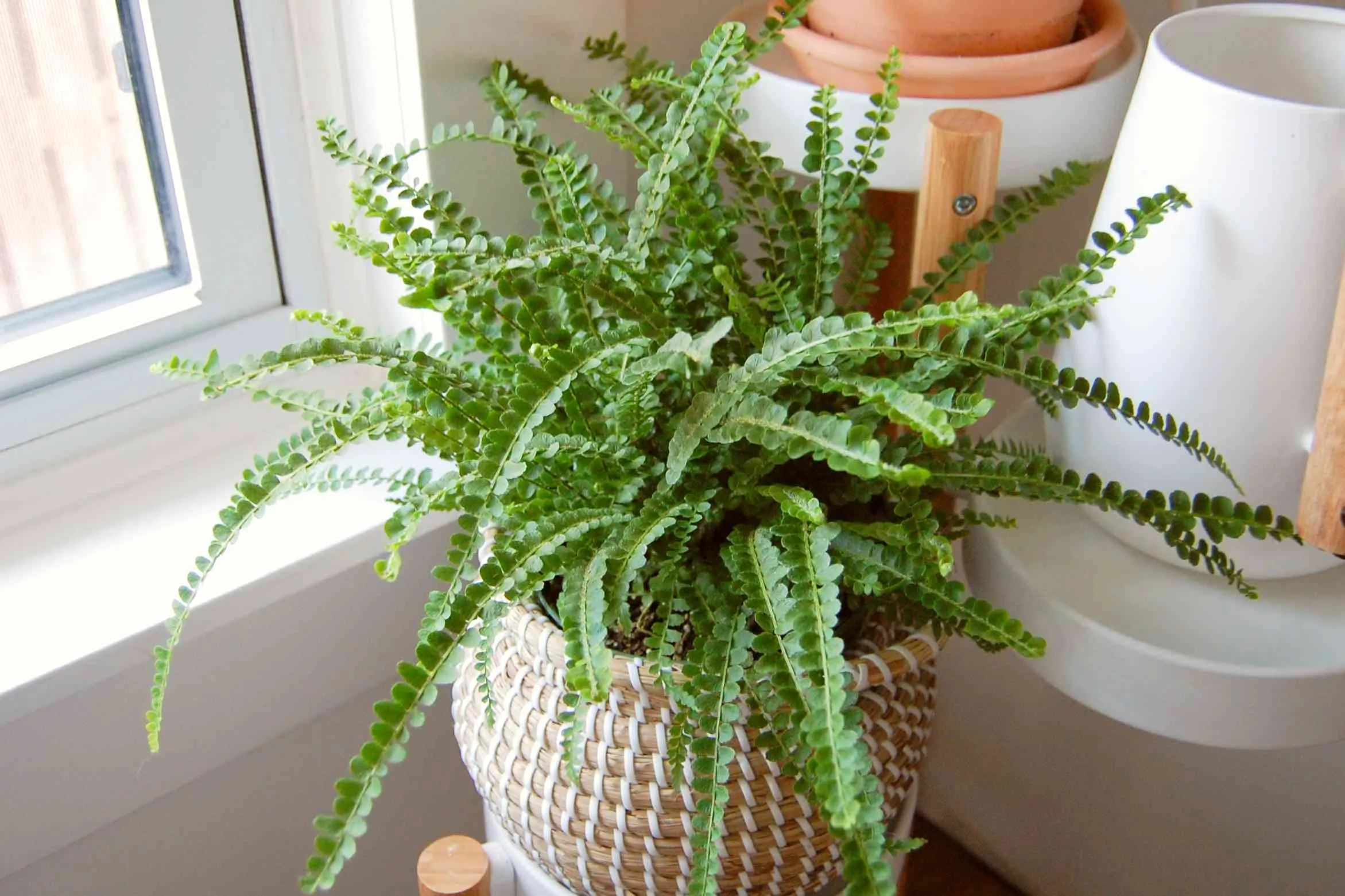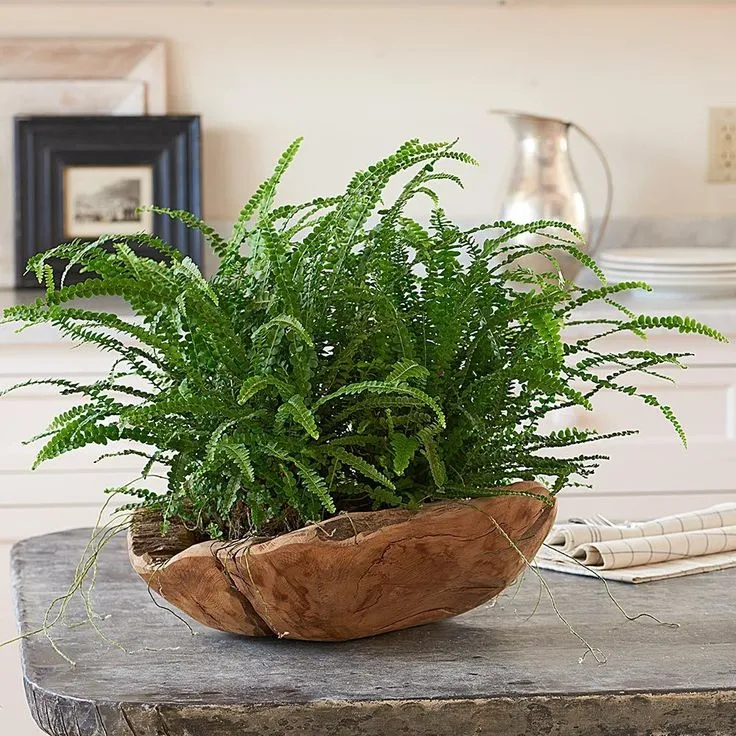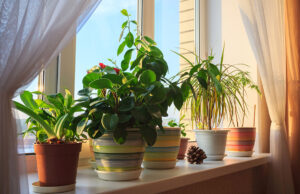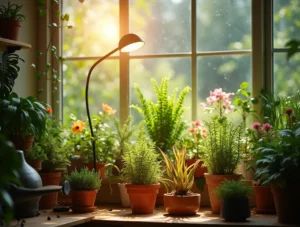If you’re looking for a compact, low-maintenance, and aesthetically pleasing fern to add to your indoor plant collection, look no further than the Lemon Button Fern.
This small, easy-to-care-for fern is perfect for beginners and adds a lush, vibrant feel to any space.
In this guide, we’ll cover everything you need to know about Lemon Button Fern care, including watering, light, humidity, and common problems to watch out for.
On This Page
Key Takeaways:
- The Lemon Button Fern is a compact and easy-to-grow indoor plant.
- Ideal for homes with moderate to high humidity.
- Needs consistent watering and indirect light.
- Pet-friendly and non-toxic to cats and dogs.
- Troubleshooting tips for common issues like yellowing leaves and slow growth.
What is a Lemon Button Fern?
The Lemon Button Fern (Nephrolepis cordifolia) is a small, hardy fern that thrives in indoor environments.
Its tiny, round leaflets are the defining feature, giving it a textured, elegant appearance. Native to tropical and subtropical regions, this fern is well-suited to life as a houseplant.
It grows slowly and is well-known for being pet-friendly, making it a safe option for households with cats or dogs.
Why Choose a Lemon Button Fern for Your Home?
The Lemon Button Fern is not only visually appealing but also a practical choice for indoor gardeners.
It thrives in low to medium light, making it perfect for apartments, offices, and other low-light areas.
Additionally, this plant improves air quality by absorbing toxins and releasing oxygen, making it both decorative and functional.
The fern’s compact size means it fits well on shelves, windowsills, and tabletops. Its low-maintenance nature makes it ideal for beginners and experienced plant lovers alike.
How to Grow a Lemon Button Fern: The Basics
Growing a lemon button is easy if you follow a few essential guidelines.
Here’s how to create the ideal environment:
- Light: Place your fern in bright, indirect light, but avoid direct sunlight, which can scorch the delicate fronds.
- Temperature: This fern prefers room temperatures between 60 and 75°F.
- Soil: Use a well-draining, organic-rich potting mix. A blend designed for ferns works perfectly.
Make sure the soil remains moist but not soggy. The plant prefers high humidity, which we’ll cover in detail below.
Watering Your Lemon Button Fern: Best Practices
Watering is one of the most critical aspects of Lemon Button Fern care.
- How Often: Water when the top inch of soil feels dry. Avoid letting the soil completely dry out.
- Signs of Overwatering: Yellowing leaves and mushy stems are telltale signs.
- Underwatering: If the leaves become dry and brittle, increase the frequency of watering.
Light Requirements for Lemon Button Fern
The lemon button thrives in bright, indirect light, similar to the light found under a canopy of trees in its natural habitat.
It can tolerate low light conditions but will not grow as vigorously. Avoid placing it in direct sunlight, as the delicate fronds can become scorched.
If you’re growing it indoors, a spot near a north-facing or east-facing window works best.
Best Humidity Levels
This fern loves high humidity, mimicking the moist conditions of its natural habitat.
If you live in a dry climate or have your heating on frequently, you may need to increase the humidity levels around your fern.
Here are a few tips:
- Misting: Lightly mist the leaves a few times a week.
- Humidifiers: Use a humidifier in the room where your fern is located.
- Pebble Tray: Place a tray filled with water and pebbles under the pot to help increase humidity around the plant.
Fertilizing
Feeding your fern is easy and can significantly improve its growth. During the growing season (spring through summer), apply a balanced, water-soluble fertilizer once a month.
Be careful not to overfertilize, as too much can cause root burn and damage your plant.
How to Repot a Lemon Button Fern
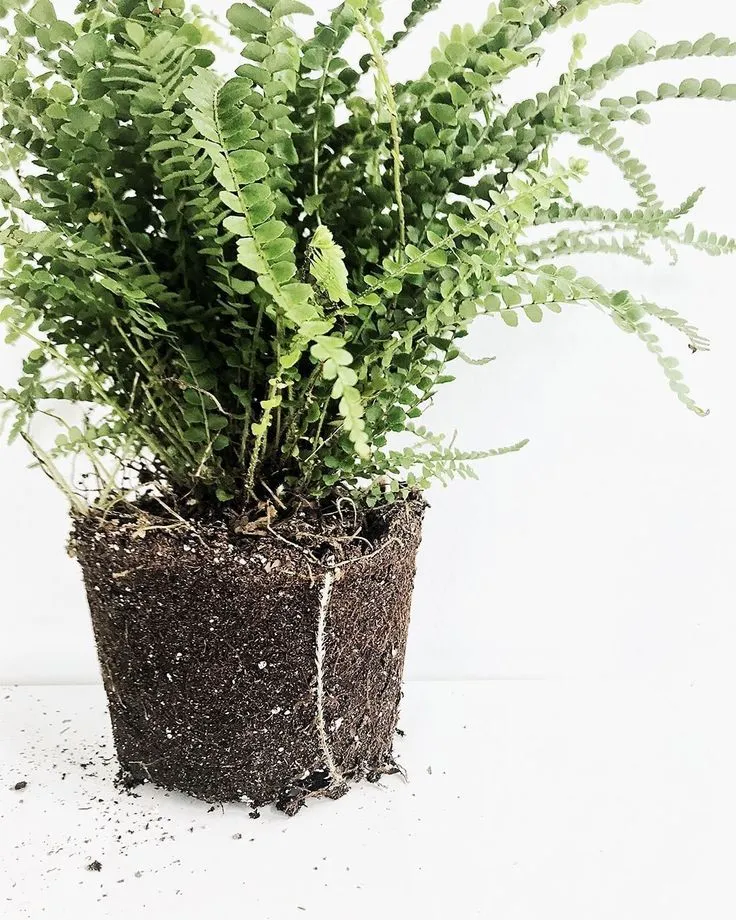
Repotting your lemon button is necessary when the plant becomes root-bound, typically every 1-2 years.
Follow these steps to repot:
- Gently remove the fern from its current pot.
- Shake off excess soil and inspect the roots for health.
- Place the fern in a slightly larger pot with fresh, well-draining soil.
Repotting should be done in the spring to give the fern plenty of time to adjust to its new home.
Pruning Lemon Button Fern: Why and How to Do It
Pruning is essential to keeping your fern looking neat and healthy.
- When to Prune: Trim away any yellow or brown fronds that develop over time.
- How to Prune: Use clean, sharp scissors and cut the fronds at the base of the plant.
Regular pruning encourages new growth and helps your fern maintain its shape.
Common Problems and Troubleshooting
Yellowing Leaves
Yellowing leaves are one of the most common problems. This issue can be caused by:
- Overwatering: Ensure the soil isn’t waterlogged.
- Insufficient Light: Try moving your fern to a spot with more indirect light.
- Nutrient Deficiencies: Apply a balanced fertilizer during the growing season.
How to Revive a Dying Lemon Button Fern
If your fern is looking worse for wear, don’t panic. Here are steps to revive it:
- Adjust watering: Ensure the soil is moist but not soggy.
- Increase humidity by misting or placing the pot on a humidity tray.
- Relocate to a brighter spot if the fern is not receiving enough light.
Lemon Button Fern Pests and Diseases
While the Lemon Button Fern is relatively pest-resistant, it can occasionally attract pests like spider mites or scale.
Here’s how to handle infestations:
- Spider Mites: Spray with neem oil or a soap solution.
- Scale: Remove them manually or treat with insecticidal soap.
Fungal infections can also occur if the fern is kept in overly humid or damp conditions. Make sure the plant gets good air circulation.
Additional Tips for Lemon Button Fern Care
Lemon Button Fern in Terrariums
Due to its compact size, the Lemon Button Fern is an excellent plant for terrariums. It thrives in the moist, humid environment of a closed terrarium and adds a lush, green element to any design.
Propagating Lemon Button Fern: A Step-by-Step Guide
To propagate your Lemon Button Fern, use the division method:
- Gently remove the fern from its pot.
- Separate the root ball into smaller sections.
- Replant the divisions in new pots with fresh soil.
This is best done in the spring when the plant is naturally growing.
Frequently Asked Questions About Lemon Button Fern
Is Lemon Button Fern toxic to pets?
No, the Lemon Button Fern is non-toxic to cats, dogs, and other pets, making it a pet-friendly option for your home.
Can Lemon Button Ferns Be Grown Outdoors?
Yes, in warmer climates (USDA zones 9-11), the Lemon Button Fern can be grown outdoors in shady garden beds or hanging baskets. It thrives in moist, well-drained soil.
How Fast Does a Lemon Button Fern Grow?
The Lemon Button Fern has a relatively slow growth rate. With proper care, you can expect new fronds to develop steadily over time, but it won’t outgrow its space quickly.
